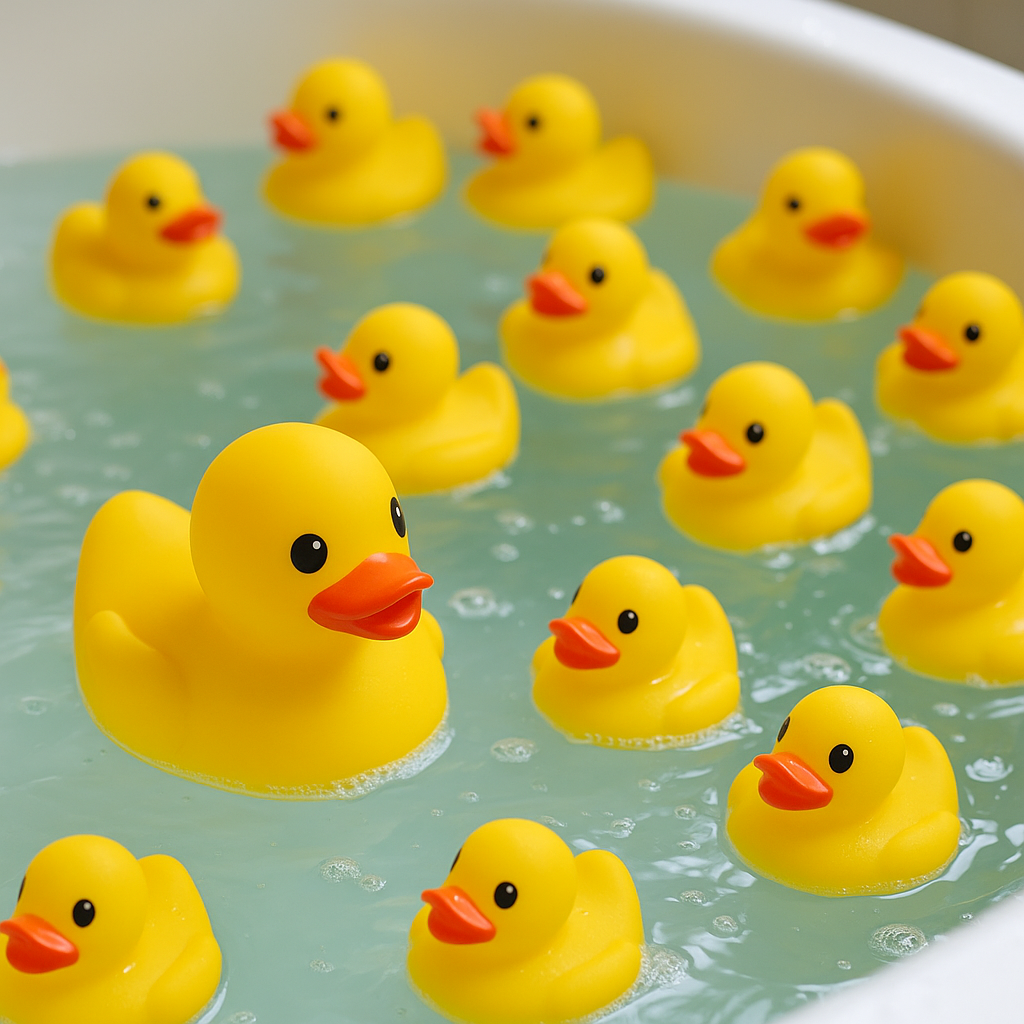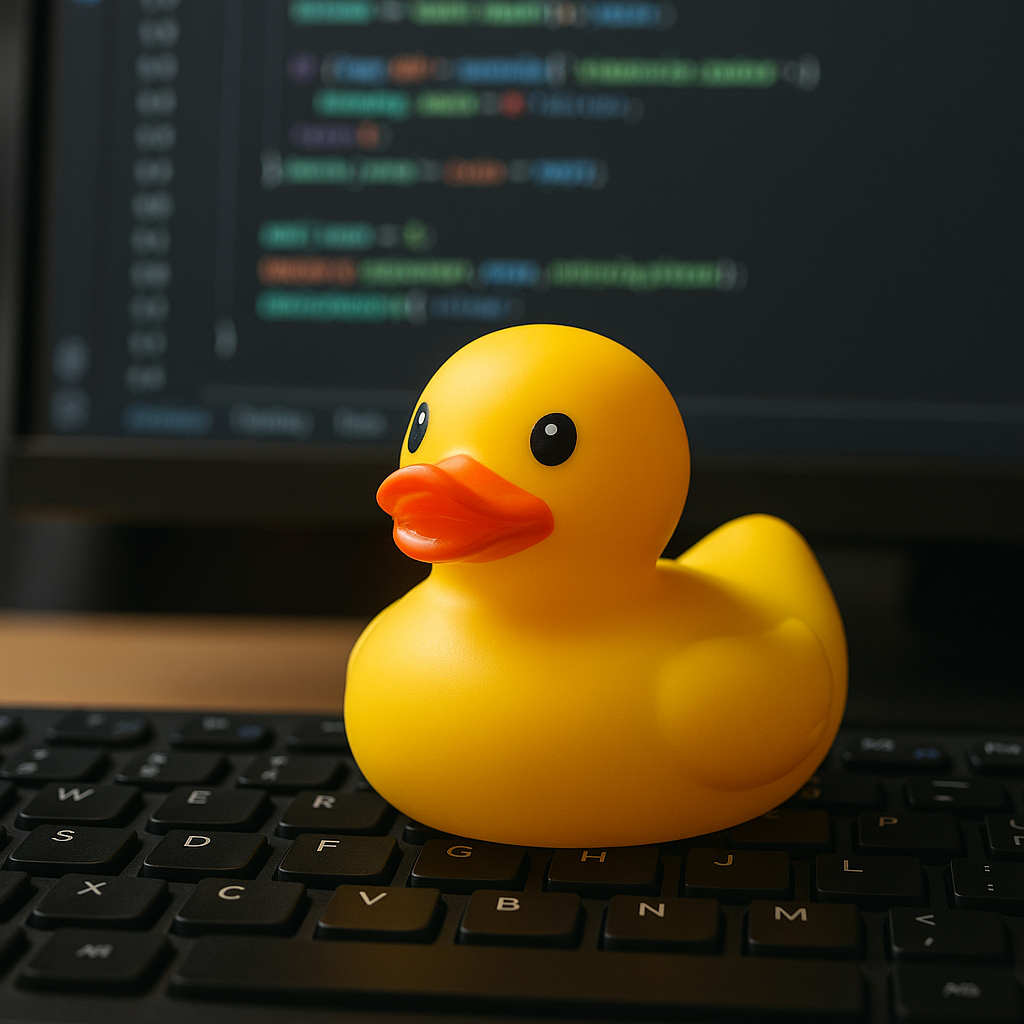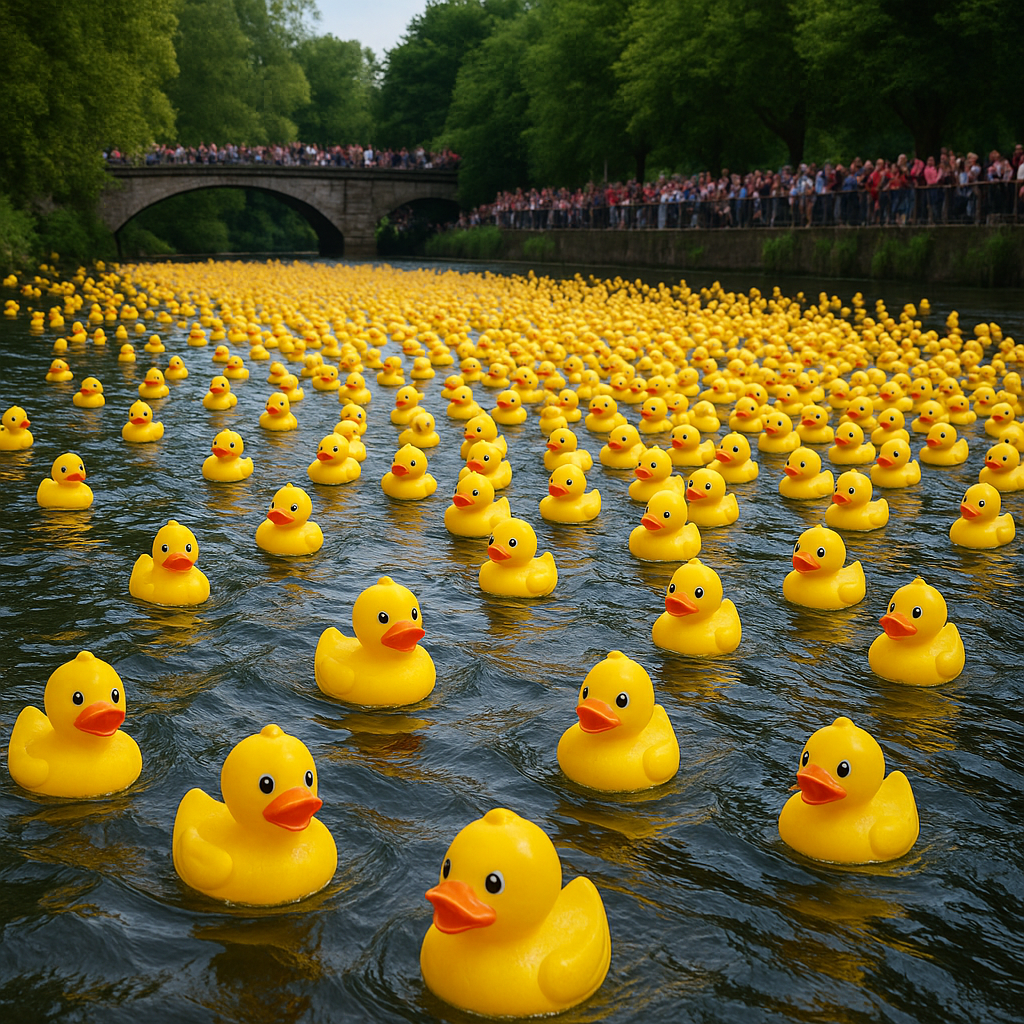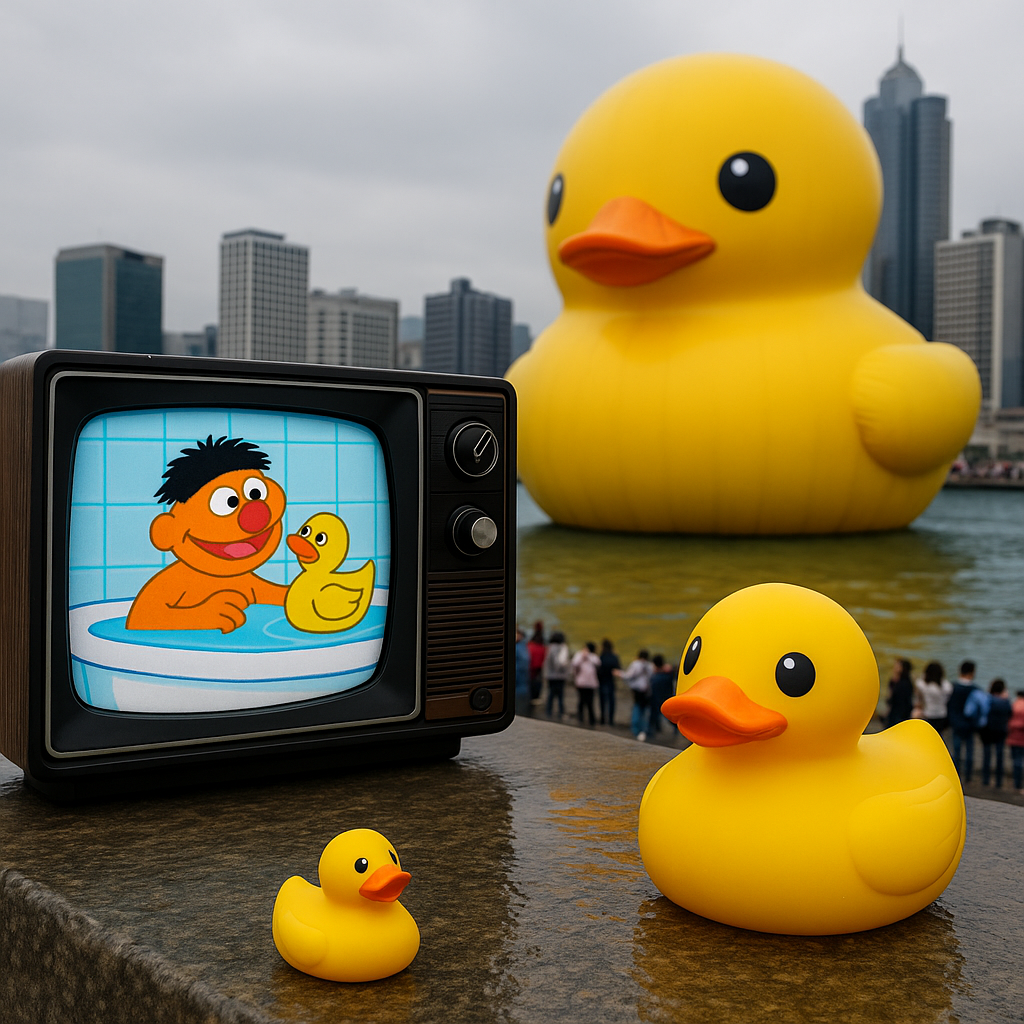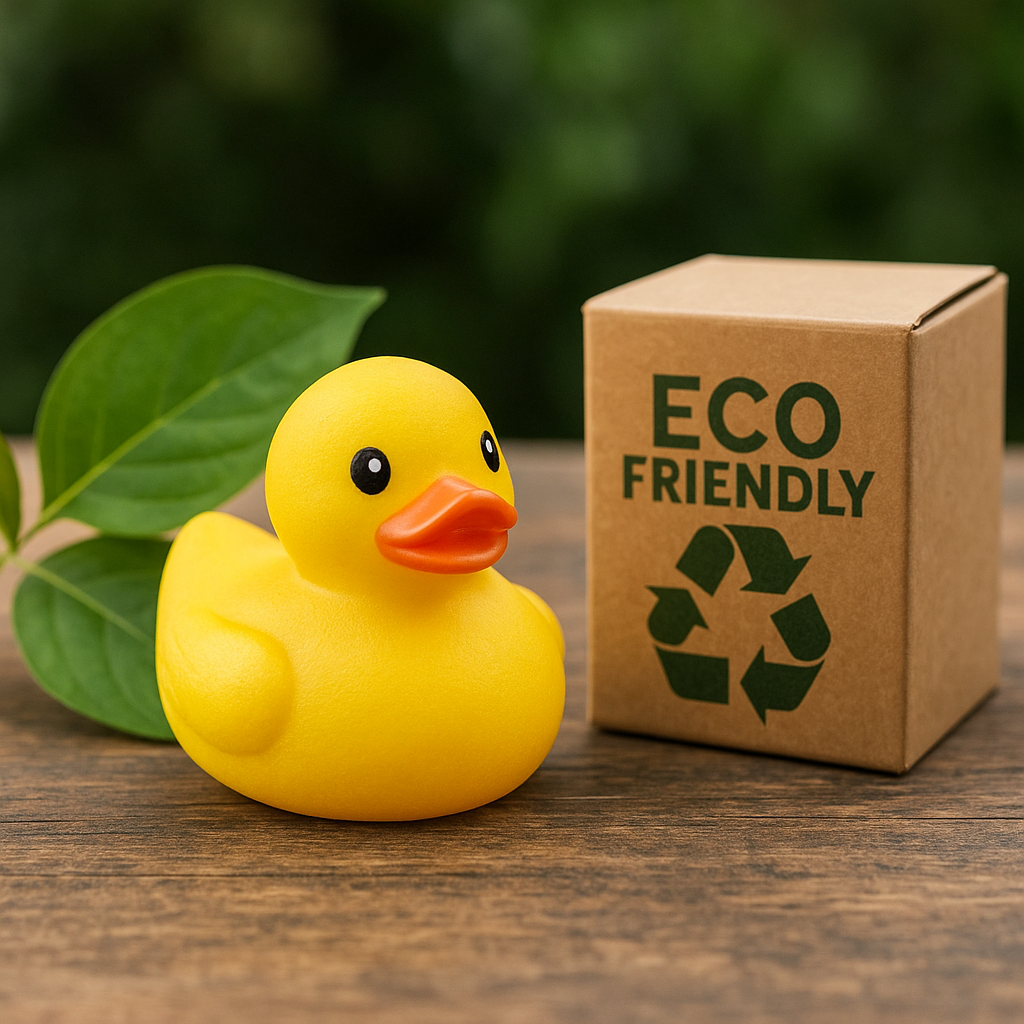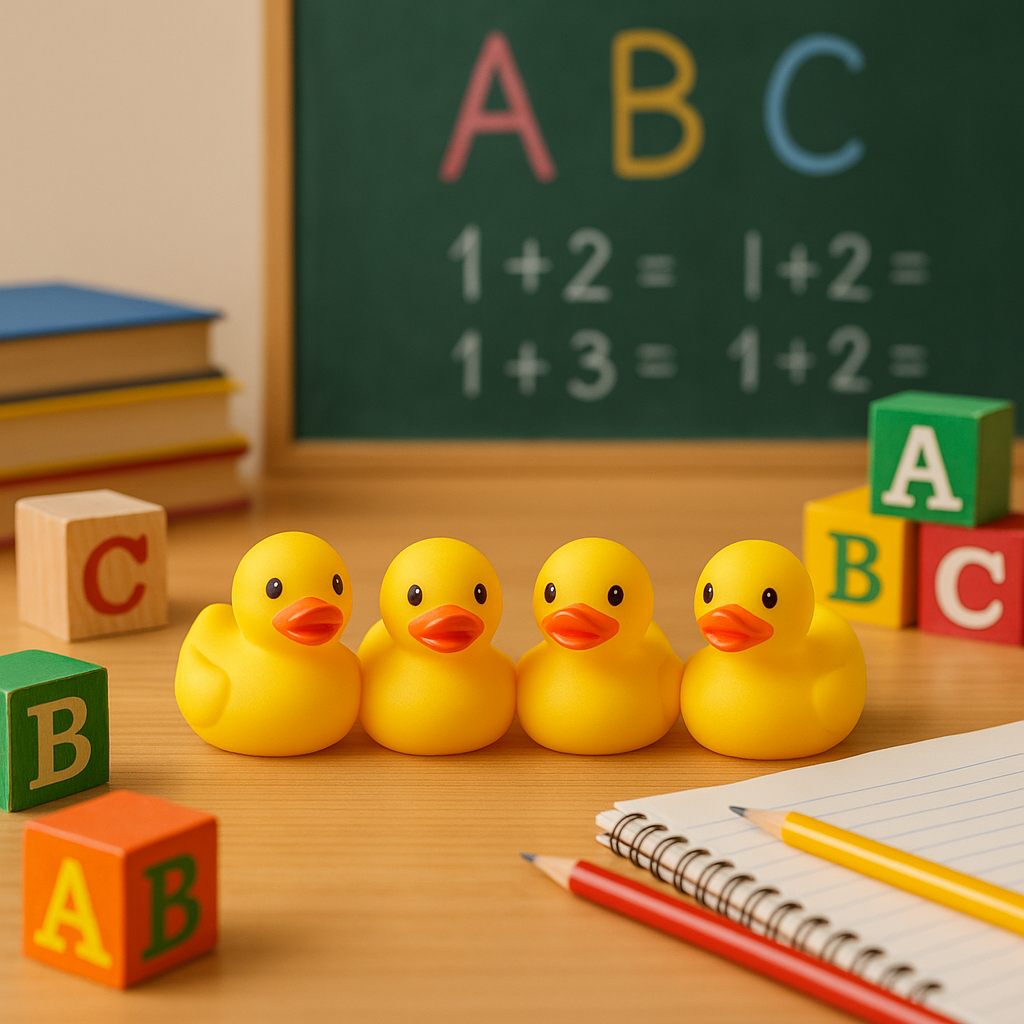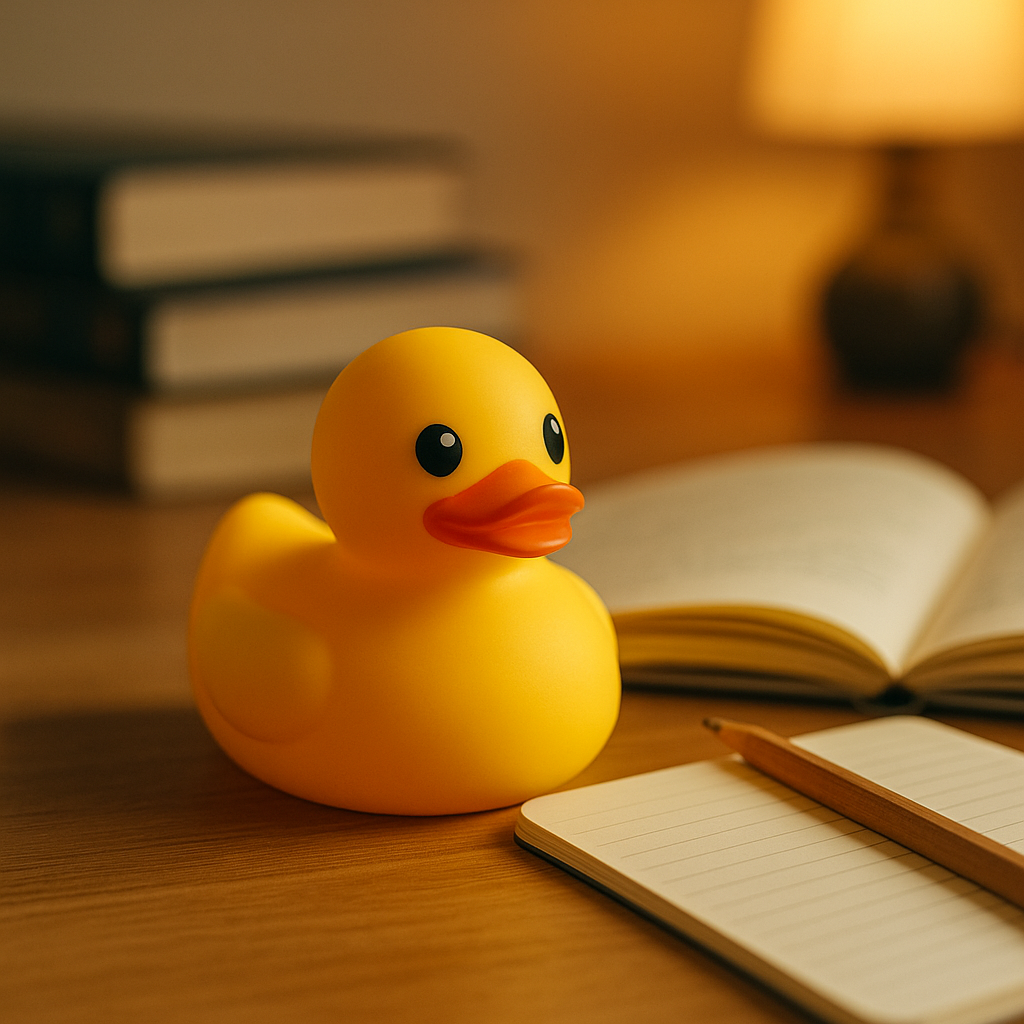Problem: People often see rubber ducks as just bath toys. Agitation: But there’s so much more behind these quirky little figures. Solution: Let’s dive into their history, purpose, and unexpected roles.
Rubber ducks have evolved from simple toys into cultural icons, educational tools, and even programming aids[^1] with surprising depth and variety.
Want to know why these smiling yellow figures hold such power? Read on to discover their origins, uses, and hidden meanings.
A Brief History of the Rubber Duck: From Hard Rubber to Bath Toy Icon?
Rubber ducks weren’t always soft and squeaky. They began as hard rubber chew toys in the early 1900s.
Rubber ducks originated from hard rubber and became popular bath toys after manufacturers introduced vinyl and latex versions[^2] in the mid-20th century.
How It All Started
In the 1940s, sculptor Peter Ganine patented a floating duck toy. This design set the foundation for the rubber duck we know today.
From Function to Fun
Originally meant as teething toys, these ducks transitioned into floating companions for children. Their cheerful design made them a staple in bathtubs worldwide.
| Year | Development | Material Used |
|---|---|---|
| 1900s | Early chew toys | Hard rubber |
| 1940s | Floating duck patented | Vinyl |
| 1960s+ | Mass production | Latex, plastic |
How Rubber Ducks Are Made: Inside the Manufacturing Process?
Curious how these cheerful ducks come to life? It starts with molds and ends with squeaks.
Rubber ducks are typically made using injection molding or rotational molding[^3] with plastic or vinyl materials, followed by painting and quality checks.
Step-by-Step Production
- Design: A CAD model is created.
- Molding: Molten vinyl is injected into duck-shaped molds.
- Cooling: The mold is cooled and opened to release the duck.
- Finishing: Details like eyes and beaks are painted by hand or machine.
| Process Step | Description |
|---|---|
| Design | CAD models specify size and features |
| Molding | Heated material fills mold cavities |
| Cooling | Solidifies the duck’s shape |
| Finishing | Paint, squeakers, and packaging added |
Quality and Safety
Manufacturers check for harmful chemicals like BPA and phthalates[^4]. Certified ducks meet EN71 or ASTM F963 toy safety standards.
Why Children Love Rubber Ducks: Play, Comfort, and Development?
Ever wondered why kids gravitate toward rubber ducks? It’s more than just their bright color.
Rubber ducks appeal to children due to their simple design, cheerful expression, and tactile interaction, supporting sensory development and imaginative play[^5].
Comfort in Simplicity
Children find emotional comfort in the predictable and cheerful form of rubber ducks, especially during bathtime routines.
Developmental Benefits
- Sensory Exploration: The texture and squeak stimulate touch and hearing.
- Imaginative Play: Ducks often become characters in a child’s story.
- Routine Reinforcement: Bathing with ducks helps children enjoy hygiene habits.
Rubber Duck Debugging: The Surprising Programmer’s Tool?
This little duck isn’t just for play — it helps solve coding problems.
Rubber duck debugging is a problem-solving method where programmers explain their code line-by-line to a duck or other inanimate object.
Why It Works
Speaking code aloud helps identify logical errors. Explaining things clearly forces the brain to reprocess and notice missed steps.
Origin
This technique gained popularity from the book The Pragmatic Programmer, where the duck is a metaphor for forced clarity.
| Step | Action |
|---|---|
| 1 | Place duck near computer |
| 2 | Verbally explain code to the duck |
| 3 | Identify problem during explanation |
Rubber Duck Races: Fun, Community, and Charity Fundraising?
Yes, people really race thousands of rubber ducks down rivers — and for a good cause.
Rubber duck races are public fundraising events where numbered ducks are released into a river[^6], and winners receive prizes.
A Crowd-Pleasing Tradition
These events attract thousands of spectators and raise funds for hospitals, schools, and local causes.
Organizing a Race
- Number each duck
- Sell tickets corresponding to duck numbers
- Release ducks into a water body
- The first to cross the finish line wins
| City | Event Name | Funds Raised |
|---|---|---|
| Chicago | Duck Derby | $350,000+ annually |
| London | Duck Race | £10,000+ for charities |
| Brisbane | Duck Festival | Supports children’s hospitals |
Rubber Ducks in Pop Culture: From Sesame Street to Giant Art Installations?
Rubber ducks aren’t just in tubs—they’re in art galleries and on giant barges.
Rubber ducks appear widely in pop culture, including TV shows, advertisements, and large-scale art installations[^7] like those by artist Florentijn Hofman.
TV and Music
- Sesame Street: Ernie’s "Rubber Duckie" song became iconic.
- Movies: Ducks appear in scenes to lighten the mood or evoke nostalgia.
Art and Impact
- Hofman’s massive floating duck traveled global harbors.
- Ducks represent innocence, peace, and humor.
| Platform | Example | Impact |
|---|---|---|
| TV | Sesame Street | Boosted duck’s iconic status |
| Art | Giant Duck | Public engagement |
| Ads | Insurance/cleaning brands | Playful branding |
Eco-Friendly Rubber Ducks: Reducing Plastic Waste and Going Green?
Can rubber ducks go green? Yes — with biodegradable materials.
Eco-friendly rubber ducks are made from natural rubber or recycled plastics[^8], minimizing environmental impact and aligning with sustainability efforts.
Materials That Matter
- Natural Rubber: Biodegradable and safe.
- RPET: Recycled plastics reduce waste.
Certifications to Look For
- GRS (Global Recycle Standard)
- FSC (Forest Stewardship Council) for packaging
| Material | Environmental Impact |
|---|---|
| PVC | Non-biodegradable, pollutant |
| Natural Rubber | Biodegradable, renewable |
| RPET | Recycled, lower carbon footprint |
Educational Uses of Rubber Ducks in Schools and Classrooms?
Teachers use rubber ducks as more than just toys — they’re learning aids.
Rubber ducks support classroom learning by aiding storytelling, counting, behavior tracking, and even programming logic exercises[^9].
Interactive Teaching Tool
- Counting: Use ducks in early math exercises.
- Storytelling: Kids create stories with duck characters.
- Classroom Management: "Ducky of the Day" rewards good behavior.
Tech and Logic Learning
- Introduce debugging with rubber ducks in beginner coding classes.
- Encourage problem articulation.
Collecting Rubber Ducks: Limited Editions and Themed Designs?
People collect rubber ducks like others collect stamps or action figures.
Rubber duck collecting includes themed, seasonal, and limited-edition ducks, with some collectors owning hundreds to thousands of designs.
Themes Galore
- Holiday ducks (Christmas, Halloween)
- Occupation ducks (Doctor, Chef)
- Celebrity parody ducks
Community and Clubs
- Online forums and duck collector clubs exist globally.
- Some collectors trade or exhibit their ducks.
| Type | Example | Rarity |
|---|---|---|
| Holiday | Santa Duck | Common |
| Limited Edition | Gold-Plated Duck | Rare |
| Custom | Branded Corporate Ducks | Very Rare |
The Psychology of Rubber Ducks: Comfort, Creativity, and Problem-Solving?
Why do adults and children alike feel attached to rubber ducks?
Rubber ducks evoke emotional comfort, stimulate creativity, and serve as tools for reflective thinking and problem-solving.
Comfort Object
The rubber duck is often seen as a "transitional object," providing emotional security especially for children during stressful routines like bathing.
Creative Tool
Adults use them to think differently — whether in art, software, or education. The duck’s neutrality makes it a great blank slate.
| Aspect | Psychological Role |
|---|---|
| Comfort | Emotional stability |
| Creativity | Stimulates imagination |
| Focus | Encourages clarity of thought |
Conclusion
Rubber ducks are more than toys — they’re tools, art, comfort objects, and cultural icons that continue to evolve and surprise us.
[^1]: Discover how rubber ducks help programmers debug code by talking through problems out loud.
[^2]: Understand the evolution of duck materials and why vinyl and latex became dominant.
[^3]: Learn how industrial molding methods shape the rubber ducks we use today.
[^4]: See why chemical testing for BPA and phthalates ensures toy safety.
[^5]: Explore how ducks enhance children’s sensory and imaginative play.
[^6]: Learn how rubber duck races are organized and support charitable causes.
[^7]: Discover how artists use giant rubber ducks to engage global audiences.
[^8]: Understand sustainable materials like natural rubber and RPET in toy production.
[^9]: See how rubber ducks are used to teach logic and debugging in classrooms.





